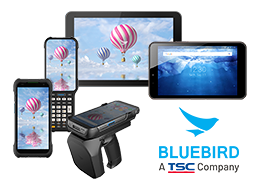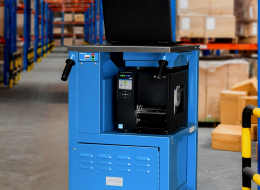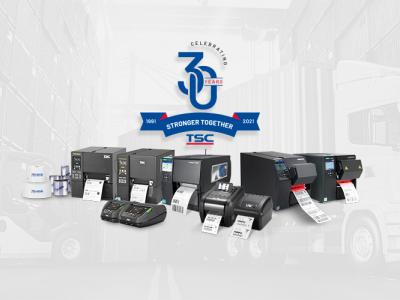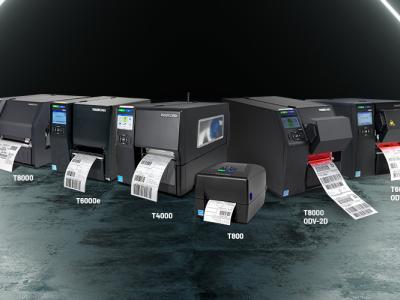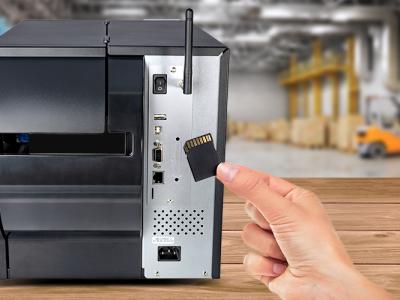6 Key Benefits of Thermal Barcode Printers that Surpass Line Matrix Printer Technology
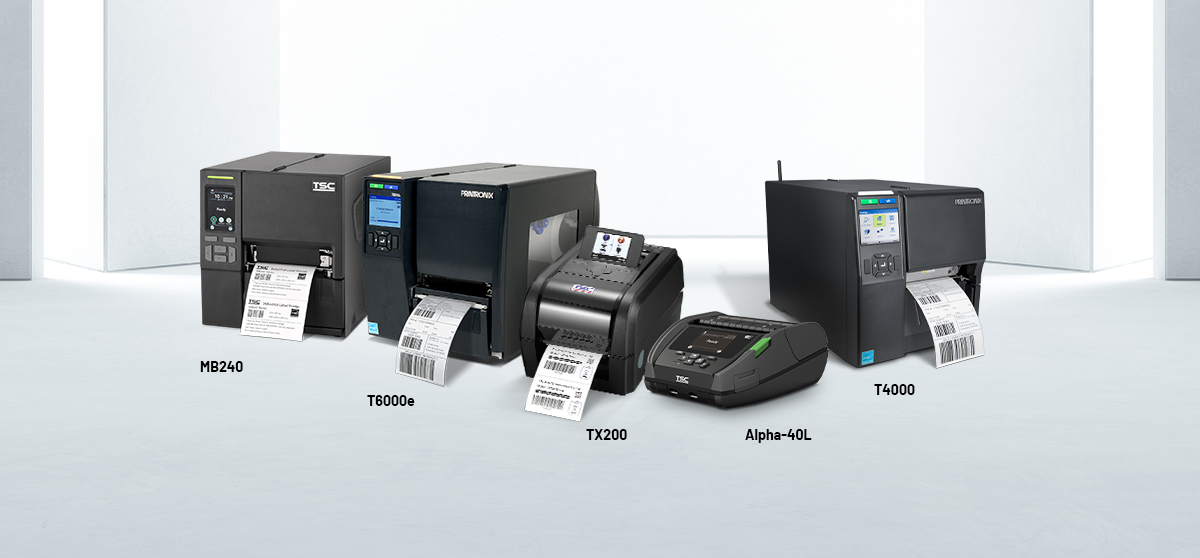
Do you know what an impact printer is? If you have one, it’s that large metal cabinet in the corner of the print room that hums away and deafens you when you open the lid. It uses an impact printing technology where a row of hammers strike an ink-laced ribbon to place dots on paper. The high-end impact models are also known as line matrix printers or line printers.
Readers who have been in the industry for a while might reminisce about the mini-computer days in the 70s and 80s which drove a need for cost effective printing. At the time, line matrix printers were quickly adopted as a cost-effective technology. Some well-known line matrix printer brands emerged to fulfill that need like IBM, HP, Unisys, and Bull. In more recent times, the line matrix printing brands include Tally and Genicom (who merged to become TallyGenicom), and Printronix LLC. As the line printer market diminished, Printronix LLC acquired the assets of TallyGenicom and they were integrated into one brand. “Printronix LLC” is not to be confused with our printer brand, Printronix Auto ID, a thermal printer spinoff from the line printer company, now wholly owned by TSC Auto ID.
Yes, line matrix printers are still out there but their numbers are declining as the technology has been surpassed by thermal printing technology. While line printers have some interesting features, thermal printers offer many compelling advantages including being rugged, flexible, and affordable with options that can operate in harsh environments or print with minimal noise.
Keep reading to learn the key benefits of thermal barcode label printer technology.
The Top 6 Benefits of Thermal Barcode Label Printers
1. Better Print Quality: A typical line printer offers print resolution at only 120 dpi which makes the printed characters look jagged or crudely formed, and also requires barcodes to be printed in a larger format so that they can be scanned properly. And as the line matrix printing speed goes up, the resolution goes down. Asian or specialty characters are printed using a special fine-tip hammer, slowing the print speed down while increasing the noise. As the ink in the ribbon is depleted, a noticeable difference in the print density can be seen. If you are looking for crisp, black print on the page, an old ribbon just won’t perform as needed.
Thermal printers are a clear winner with print resolutions offered at 203, 300, or 600 dpi. When the print speed goes up, the resolution does not go down. A good thermal printer will provide a much more faithful print reproduction, regardless of speed. And a thermal printer always prints on unused ribbon.
2. Excellent Versatility: One advantage of line matrix printers is the ability to print on both wide label paper (greater than letter or A4), and on multi-part forms (although thermal printers can simply print multiple copies). One point to note is that line printers require tractor fed paper which means you are limited on the types of paper you can print on. You also become limited by where you can purchase that paper. Further, the ink durability limits the applications where it can be used.
Thermal printers have excellent versatility with the ability to print on all manner of substrates, including paper, polyesters, PTFE, Tyvek, and tag stock, and with a range of ribbons to ensure the appropriate print quality and durability for the application. You can also print without thermal ribbons on direct thermal paper which provides a convenient alternative when label life span is less than 1-2 years.
3. Lower Acquisition Cost: The line printer acquisition cost is nominally twice that of a high-end industrial thermal printer, and the ratio is even higher for mobile, desktop and other industrial thermal printer models. This can be challenging when enterprises don’t want to have their capital tied up in equipment.
While line printer supplies (or consumables) are generally less expensive than thermal, there are risk factors to consider. First, you are single sourced on the ribbons and subject to the pricing vagaries of the OEM. Second, there are limited sources for the tractor fed supplies. For the thermal printer supplies market, most major OEMs have their own label production house but there are also independent label converters to ensure a healthy market.
The other benefit to consider when buying new printers is that thermal printers come in a wide range of models, from affordable desktops, to rugged mobile, to durable and reliable industrial. For companies looking to invest in advanced technology such as RFID and automated barcode inspection systems, they can rely on TSC Printronix Auto ID with a wide range of industry leading features and capabilities.
4. Environmental Advantages: Line matrix printers are considered robust due to their all-metal enclosure, but they have a large footprint and are very heavy. To put it into perspective, a single shipping pallet could hold one line printer versus 6-8 of the largest industrial thermal printers.
Line printers are also notoriously noisy. While the cabinet models contain the noise quite well, when the lid is opened the shuttle mechanism and impact hammers are deafening. Pedestal models do not have much insulation and are inherently noisier – to the point they need to be located away from working employees. While any high-volume printing device will be distracting, in general thermal printers are quieter, and in some cases specifically designed to minimize printing noise effect, such as the TSC MB Series industrial printer.
5. Enhanced Reliability: Initially, line matrix printers had a good reputation for reliability, despite the mechanical print process. However, thermal printers quickly surpassed them, and today a reputable high-end industrial printer offers twice the Mean Time Between Failure (MTBF) as a line printer.
6. Simpler Serviceability: The core print system in a line matrix printer is the hammerbank. This device contains the shuttle motor and print hammers. Typically, this assembly needs to be serviced every year to adjust the hammer spring tension and grease the bearings, a process that requires a specially trained technician. It can’t be performed at the customer’s site and so the assembly must be shipped to a specially authorized service center. To maintain printing while being serviced, users must deploy a replacement printer or a spare hammerbank.
Thermal printers can be readily serviced on site. Typically, the thermal printhead can be replaced by the customer while other maintenance may be outsourced to the original manufacturer or authorized service provider and in both cases, minimizes the printer down time and maintenance cost.
Transition from Line Printers to Thermal Printers with Ease and Confidence
Transitioning away from line matrix printers is easier than you could imagine. If your customer currently has line printers in their printer fleet, such as the Printronix P8000, IBM 6400, and TallyGenicom 6800, we can help you replace them with TSC Printronix Auto ID thermal printers.
The TSC Printronix Auto ID thermal printers share the same PSA platform as the Printronix LLC line printers, including support for PGL print graphics language and PDF/PostScript, as well as the legacy VGL (Code V) and IPDS print languages. And our thermal printers support legacy impact languages such as LP+, ANSI, OKI, LQ and others. This breadth of language support ensures that any legacy line matrix printer application, along with adjustments for form size, can readily work on a TSC Printronix Auto ID thermal printer. Even the PrintNet Enterprise remote printer management tool is compatible with our printers.
We continue to invest in the platform and technology to provide a robust portfolio of high performance, versatile, and reliable enterprise grade thermal printers, including:
- High-end desktop, light industrial, mid-range industrial, and high-end enterprise industrial thermal printers
- Print speeds up to 14 ips with options for 203, 300, and 600 dpi printheads
- Support for all major thermal printer languages and legacy line printer languages
- The latest network and Wi-Fi connectivity with enterprise level security
- Remote printer management using either PrintNet Enterprise or the subscription-based SOTI Connect
- A suite of three RFID print/encode printer models with advanced encoding and calibration features
- An integrated 1D and 2D barcode verification and validation option to assure barcode quality
To learn more, visit our website or contact your local TSC Printronix Auto ID representative.



